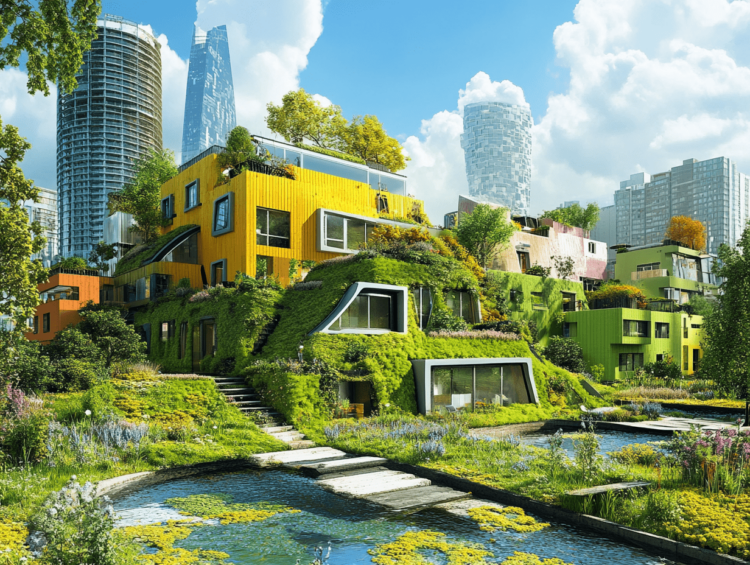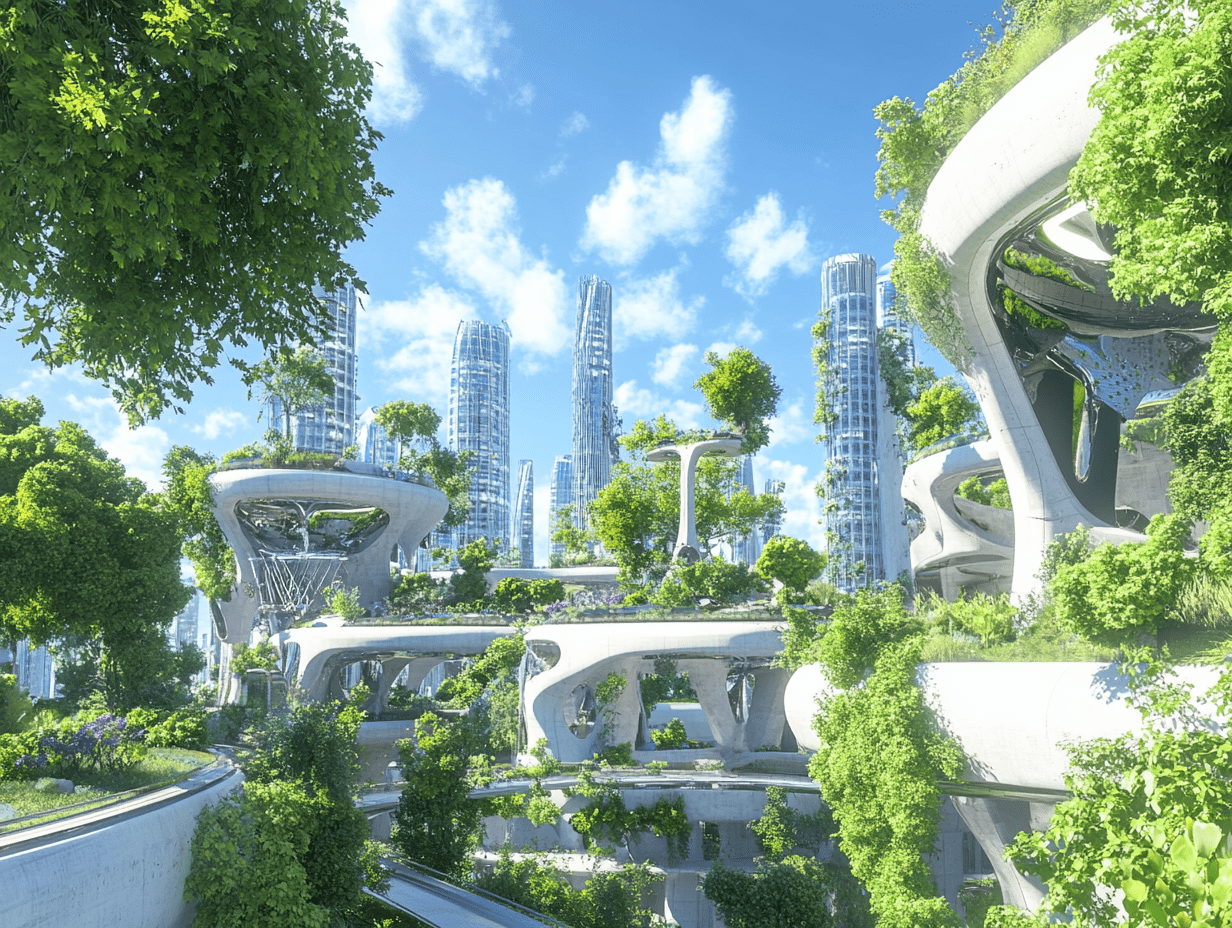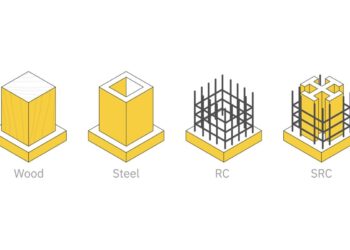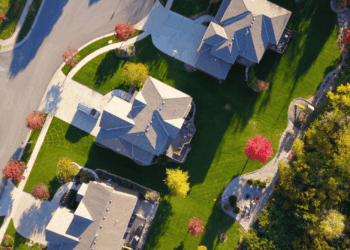In today’s rapidly evolving urban landscape, smart buildings have emerged as a revolutionary force shaping the way we live, work, and interact with our environment. These advanced structures are not merely physical spaces for habitation or work; they represent a fusion of technology, sustainability, and innovative design, ultimately transforming urban living into an interconnected, efficient, and adaptive experience. In this comprehensive article, we explore the definition of smart buildings, the technologies that power them, their numerous benefits, the challenges they pose, and the transformative impact they have on cities and urban development. The discussion is designed to be in-depth, ensuring it meets the needs of search engine optimization and Google AdSense while providing valuable insights for a diverse audience.
Smart Buildings
Modern cities are facing challenges such as rapid urbanization, increased energy consumption, and a demand for sustainable living spaces. Amid these challenges, smart buildings offer innovative solutions that promote energy efficiency, improve safety, optimize resource management, and enhance the overall quality of life. Smart buildings integrate a myriad of technologies—from Internet of Things (IoT) devices to artificial intelligence (AI) and advanced sensors—that work together seamlessly to manage, control, and automate building operations.
The essence of a smart building lies in its ability to learn from user behavior and environmental data, making real-time decisions to adapt to changing conditions. As cities grow and the environmental impact of urban development comes under increasing scrutiny, smart buildings are at the forefront of a green revolution in architecture. They not only provide a comfortable and safe environment for occupants but also contribute significantly to reducing the carbon footprint of urban areas.
Throughout this article, we will delve into how smart buildings are setting new standards for sustainable architecture and modern living. With a focus on technological integration, data-driven management, and environmental sustainability, these structures illustrate the future of urban development—a future where innovation meets responsibility.
What Defines a Smart Building?
A smart building is defined by its ability to use automation, advanced systems, and digital technologies to monitor and control various building operations. These operations include—but are not limited to—energy usage, security systems, lighting, heating, air conditioning, and overall resource management. Unlike traditional buildings, which rely on manual operations or simple automated systems, smart buildings utilize complex networks and data analytics to ensure optimum performance and efficiency.
Key characteristics of a smart building include:
Integrated Technology: Smart buildings incorporate sensors, cameras, thermostats, and other IoT devices that constantly communicate with centralized management systems.
Data-Driven Decision Making: Continuous data collection and analysis allow building systems to adapt dynamically to real-time conditions.
Sustainable Practices: Emphasis on renewable energy sources, energy efficiency, and reduced waste to promote environmental stewardship.
User-Centric Design: By analyzing occupancy patterns and user preferences, smart buildings enhance comfort, safety, and usability.
Remote Access and Control: Facility managers and occupants can monitor and adjust building operations remotely through cloud-based applications and mobile devices.
These features enable smart buildings to operate with a level of precision and adaptability that traditional structures can scarcely match. By optimizing energy consumption, reducing operational costs, and improving overall safety, smart buildings represent not only a technological advancement but also a sustainable and economic solution for the future of urban development.
Key Technologies Powering Smart Buildings
The backbone of smart building technology is a combination of several cutting-edge tools and systems that work in concert to enhance building performance. This section breaks down the primary technologies and innovations that enable smart buildings to function effectively.
A. Internet of Things (IoT) Integration
Smart buildings are equipped with an extensive network of IoT devices that monitor various parameters such as temperature, humidity, occupancy, and energy consumption. These devices relay real-time information to central systems, allowing for continuous monitoring and automated adjustments.
A.1 Smart Sensors: These devices detect environmental changes and operational metrics, sending data to the building management system. For example, motion sensors help regulate lighting and HVAC systems based on occupancy.
A.2 Connected Appliances: Integrated appliances and systems communicate with each other, ensuring that operations are synchronized and efficient.
B. Artificial Intelligence and Machine Learning
AI algorithms and machine learning techniques play a crucial role in interpreting the vast amounts of data collected by IoT devices. These systems learn from historical data to predict future trends and adjust building operations accordingly.
B.1 Predictive Maintenance: AI can forecast when equipment is likely to fail or require maintenance, thereby preventing unexpected downtime.
B.2 Automated Energy Management: Machine learning models optimize energy usage by adjusting heating, cooling, and lighting systems based on real-time demand and historical patterns.
C. Big Data Analytics
With countless data points generated in real-time, big data analytics enables smart buildings to extract actionable insights. Analyzing this data helps optimize building performance, enhance user experience, and reduce operational costs.
C.1 Energy Consumption Analysis: Detailed analytics provide insights into energy usage trends, allowing for targeted strategies to reduce wastage.
C.2 User Behavior Patterns: Understanding how occupants interact with the building can lead to improvements in space usage and service delivery.
D. Building Automation Systems (BAS)
Building automation systems form the central nervous system of smart buildings. These systems integrate and control various subsystems including HVAC, lighting, security, and more, ensuring they work together harmoniously.
D.1 Centralized Control Platforms: These platforms manage all building operations, ensuring seamless integration between different systems.
D.2 Remote Monitoring and Control: Facility managers can access and adjust systems remotely, ensuring issues are addressed quickly and efficiently.
E. Green and Sustainable Technologies
Sustainability is at the core of smart building design. Incorporating green technologies minimizes environmental impact while improving overall building efficiency.
E.1 Renewable Energy Integration: Solar panels, wind turbines, and geothermal systems are often integrated into smart building designs to reduce reliance on non-renewable energy sources.
E.2 Energy-Efficient Materials: The use of sustainable and energy-saving materials in construction improves insulation and reduces energy loss.
E.3 Water Conservation Systems: Advanced systems monitor and manage water usage, reducing waste and promoting sustainability.
F. Cybersecurity Measures
As smart buildings increasingly rely on interconnected digital systems, protecting these systems becomes paramount. Robust cybersecurity measures safeguard data, prevent unauthorized access, and ensure the integrity of building operations.
F.1 Data Encryption and Authentication: Implementing strong encryption standards and multi-factor authentication helps protect sensitive data.
F.2 Network Security Solutions: Advanced firewalls, intrusion detection systems, and regular security audits are employed to maintain robust security frameworks.
Benefits of Smart Buildings for Urban Living
Smart buildings offer a myriad of benefits that extend far beyond improved energy efficiency and operational cost reductions. They enhance safety, provide a superior quality of life, and contribute to environmental sustainability. Below are some of the key advantages that smart buildings bring to urban areas:
A. Enhanced Energy Efficiency and Sustainability
Smart buildings monitor energy usage in real-time and make adjustments to minimize wastage. Features such as automated lighting, heating, and cooling systems ensure that energy is used only when and where needed. By integrating renewable energy sources and sustainable materials, smart buildings significantly lower carbon emissions and environmental impact.
B. Improved Operational Efficiency and Cost Savings
By leveraging automation and predictive analytics, smart buildings reduce the need for manual intervention and minimize maintenance costs. Facility managers benefit from centralized control systems that streamline operations, allowing for quicker response times to issues and more efficient resource management.
C. Superior Occupant Comfort and Well-being
Smart buildings are designed with occupant comfort in mind. They create environments that adapt to the specific needs and preferences of residents and workers. Intelligent HVAC systems ensure optimal temperature and air quality, while smart lighting systems adjust intensity and color temperature to improve mood and productivity. In addition, customizable spaces and smart scheduling allow for environments that support both work and relaxation.
D. Enhanced Safety and Security
Safety is significantly bolstered in smart buildings through integrated security systems. These include surveillance cameras, access control systems, and real-time monitoring of safety parameters. In emergency situations, smart buildings can automatically initiate evacuation procedures, alert emergency services, and provide real-time data to first responders.
E. Increased Productivity and Operational Transparency
The integration of advanced analytics and monitoring systems provides facility managers with transparent and actionable insights into building operations. This data-driven approach enables informed decision-making and the ability to pinpoint areas for improvement, which ultimately enhances productivity across various building functions.
Transformative Impact on Urban Living
The influence of smart buildings extends well beyond the structures themselves; they have the potential to redefine entire urban environments. As these innovative buildings become prevalent, they pave the way for more sustainable, efficient, and livable cities. Below, we explore the broader impact of smart buildings on urban living:
A. Revitalizing Urban Infrastructure
Modern urban infrastructures are often outdated and inefficient. Smart buildings, with their advanced technologies, are at the forefront of modernizing cityscapes. They often serve as pilot projects or model systems that demonstrate how comprehensive automation and data management can revolutionize urban design and infrastructure.
B. Driving Economic Growth
Investments in smart building technologies stimulate the economy by creating new job opportunities in fields such as IT, engineering, cybersecurity, and construction. Moreover, the operational efficiency and cost savings realized by these buildings often translate into competitive advantages for businesses operating within them, further driving economic development.
C. Promoting Environmental Sustainability
Smart buildings play a crucial role in reducing urban environmental impacts. Through smart resource management and green technologies, they help decrease energy consumption, lower greenhouse gas emissions, and mitigate urban heat islands. This contributes to a healthier and more sustainable urban ecosystem.
D. Enhancing Community Engagement and Quality of Life
Smart buildings not only improve individual living conditions but also foster a greater sense of community. They offer amenities and services that facilitate social interaction and community engagement, such as shared workspaces, interactive community hubs, and integrated digital platforms. These features create vibrant, connected urban environments where individuals feel more engaged and supported.
E. Facilitating Data-Driven Urban Planning
The data generated by smart buildings provide urban planners and city officials with unparalleled insights into how people interact with their environments. This information assists in making informed decisions regarding infrastructure development, public transportation, and resource allocation. Data-driven urban planning ensures that future developments are both sustainable and aligned with the actual needs of residents.
Challenges and Considerations in Implementing Smart Buildings
Despite the myriad benefits, the transition to smart buildings is not without its challenges. Understanding and addressing these issues is vital to fully unlocking the potential of smart technologies in urban environments.
A. High Initial Investment Costs
One of the significant barriers to the widespread adoption of smart buildings is the high cost of implementation. Advanced technologies, sophisticated sensors, and integrated systems require considerable upfront investment. However, proponents argue that these costs are offset over time by operational savings and increased property value.
B. Cybersecurity and Privacy Concerns
As smart buildings rely on extensive data networks, they are inherently vulnerable to cybersecurity threats. Protecting sensitive information, such as occupancy patterns and energy usage data, is critical. Adequate cybersecurity measures, including robust encryption and continuous monitoring, are essential to mitigate these risks. Addressing privacy concerns also means ensuring that data is collected and used ethically and transparently.
C. Integration with Existing Infrastructure
Many existing urban buildings are not designed for digital integration. Upgrading these structures to become smart buildings involves retrofitting with new technologies and ensuring interoperability between old and new systems. This process can be complex, requiring careful planning, engineering expertise, and significant financial outlay.
D. Regulatory and Standardization Issues
Smart building technology is evolving rapidly, but regulatory frameworks and industry standards have yet to fully catch up. Establishing comprehensive standards for data security, interoperability, and energy efficiency is crucial for widespread adoption. Collaboration between government agencies, industry leaders, and regulatory bodies is necessary to develop guidelines that ensure the safe and effective implementation of smart technologies.
E. Workforce Training and Adaptation
The successful operation of smart buildings requires skilled personnel who understand advanced technologies and data analytics. Workforce training programs and educational initiatives are vital to bridge the skill gap, ensuring that building managers and facility staff are equipped to handle the complexities of smart building operations.
Future Trends in Smart Building Development
As technology continues to evolve, smart buildings are poised to become even more advanced and integrated within urban ecosystems. The following emerging trends highlight the future direction of smart building innovations:
A. Increasing Role of AI and Machine Learning
A.1 Enhanced Predictive Analytics: Future smart buildings will leverage advanced AI algorithms to predict occupancy patterns and energy usage with greater accuracy, allowing for even more efficient operational management.
A.2 Adaptive Environments: AI systems are expected to evolve to create environments that are fully adaptive, learning from user behavior and making real-time adjustments that improve comfort and efficiency.
B. Expansion of IoT Connectivity
B.1 Ubiquitous Sensor Networks: As IoT technology becomes more affordable and widespread, the number of connected devices in buildings will increase exponentially, enhancing the scope of data collection and real-time monitoring.
B.2 Seamless Integration: Enhanced connectivity will allow for more seamless integration between building systems, leading to holistic management solutions that integrate various functions such as lighting, security, and climate control.
C. Greater Emphasis on Renewable Energy Integration
C.1 Solar and Wind Technologies: Future smart buildings will increasingly integrate renewable energy systems, reducing dependency on traditional power grids and further promoting sustainable living.
C.2 Energy Storage Solutions: Advances in battery and energy storage technologies will allow smart buildings to store excess energy for later use, ensuring a continuous and reliable energy supply even during peak demand.
D. Smart Grid and Building-to-Grid (B2G) Technologies
Smart buildings will play an integral role in the evolution of smart grids. They can not only reduce energy consumption but also feed excess energy back into the grid. This two-way energy flow, known as building-to-grid technology, will create more resilient urban energy networks and foster a sustainable energy future.
E. Enhanced Digital Twin Technologies
Digital twin technology—creating virtual replicas of physical buildings—will become an indispensable tool for urban planners and facility managers. By simulating building operations and predicting the outcomes of design changes, digital twins will drive innovation in building design, maintenance, and optimization.
F. Integration of Biophilic Design Principles
To further enhance occupant well-being, future smart buildings will increasingly incorporate biophilic design elements. Integrating natural materials, indoor gardens, and natural lighting not only improves aesthetics but also fosters a healthier and more productive environment.
Transforming Urban Communities Through Smart Buildings
Smart buildings are not isolated entities; they are catalysts for broader urban transformation. Their impact is reshaping entire communities and driving new forms of urban living:
A. Community Engagement and Social Connectivity
Smart buildings often include shared spaces and digital platforms that encourage social interaction and community engagement. These spaces provide opportunities for networking, collaboration, and communal activities, fostering a sense of belonging among residents.
B. Creating Resilient and Adaptable Urban Ecosystems
In an era of rapid urbanization and climate change, resilience is key. Smart buildings, with their emphasis on sustainability and efficient resource management, contribute to the creation of urban ecosystems that are adaptable and resilient to environmental challenges. Their integrated systems can respond to emergencies, distribute resources efficiently, and support community-wide sustainability initiatives.
C. Driving Innovation in Urban Design
The success of smart building technologies is inspiring new architectural trends and urban design philosophies. Cities are increasingly seeking to integrate smart infrastructure into broader urban development projects, ensuring that new neighborhoods and commercial centers are equipped with state-of-the-art technology from inception.
D. Economic and Environmental Impact
By driving energy efficiency and reducing waste, smart buildings have a significant positive economic and environmental impact. Lower operational costs benefit both businesses and residents, while sustainable practices help reduce the environmental footprint of urban areas, contributing to healthier cities for future generations.
Overcoming Challenges: Strategies for Successful Implementation
Successfully integrating smart building technology involves tackling several challenges head-on. The following strategies outline how stakeholders can overcome obstacles and ensure a smooth transition to advanced, technology-driven urban environments:
A. Strategic Investment and Public-Private Partnerships
Investment in smart building technologies is essential. Governments, private investors, and developers must collaborate to create funding models that support the adoption of these systems. Public-private partnerships can help share the financial burden and accelerate innovation.
B. Building Robust Cybersecurity Frameworks
Implementing cutting-edge cybersecurity practices is crucial. This involves continuous monitoring, regular updates, and the adoption of advanced security protocols to protect building systems from cyber threats. Collaboration with cybersecurity experts ensures that all vulnerabilities are addressed proactively.
C. Establishing Industry Standards and Regulatory Support
Developing clear industry standards and obtaining government regulatory support can streamline the implementation of smart building technologies. Transparent guidelines on data handling, energy efficiency, and system interoperability are vital for building trust and facilitating widespread adoption.
D. Training and Development of a Skilled Workforce
To maximize the benefits of smart buildings, there must be a focus on training and certifying building managers, IT professionals, and maintenance staff. Investing in education and continuous learning ensures that the workforce is well-equipped to handle advanced technologies and maintenance protocols.
E. Community Involvement and Transparency
Engaging community members and ensuring transparent communication about the benefits and challenges of smart building initiatives builds public trust and encourages widespread support. Workshops, public forums, and digital platforms can serve as channels to educate residents and stakeholders.
Conclusion
Smart buildings are undeniably poised to redefine urban living. By blending advanced technology with sustainable practices and innovative design, these structures pave the way for cities that are more energy-efficient, resilient, and occupant-friendly. The evolution of smart buildings represents not only a technological leap but also a paradigm shift in how urban spaces are designed and managed.
As we look toward the future, the integration of smart building technologies will continue to expand, driven by advancements in AI, IoT, and renewable energy. Urban planners, architects, developers, and technology experts must work together to overcome challenges and harness the full potential of smart buildings. The result will be urban environments that are not only more efficient but also more vibrant, sustainable, and adaptive—truly reflective of the evolving demands of modern living.
Smart buildings will serve as the cornerstone of future urban landscapes. They offer a glimpse into a world where technology and sustainability work in harmony to create livable, resilient, and innovative communities. Embracing these changes today is key to building a smarter, greener future for generations to come.











